The possibilities for a book journal are endless…
…and that’s the best part! You get to make it your own.
You don’t need to be artistic or stress about having the perfect handwriting.
Of course, you can share your reading journal with other bookish lifestyle friends if you want, but you don’t have to. It’s a place for you to reflect and and go deeper with the books that you enjoy (or even rant about the ones you don’t).
A reading journal is a memento throughout the years on all the books you’ve read, and it can help you remember all the details about a story for when the next book in the series is released.
There are so many benefits of keeping a reading journal. I love the creative aspect and enjoy the fun of crafting spreads and logging my progress on trackers.
Disclaimer: Links to any products in this post are not sponsored or affiliated with me, they are just the things that I use daily and love.
If you feel like you are in a creative rut with your journaling, or maybe you are just beginning and looking for some easy spreads to get started, this post is perfect for you!
I’m going to give you ideas and inspiration for some spreads and trackers that you can keep in your own reading journal.
Don’t worry, they’re are simple and easy to create with no artistic ability and minimal supplies – all you really need is a pen and a notebook.
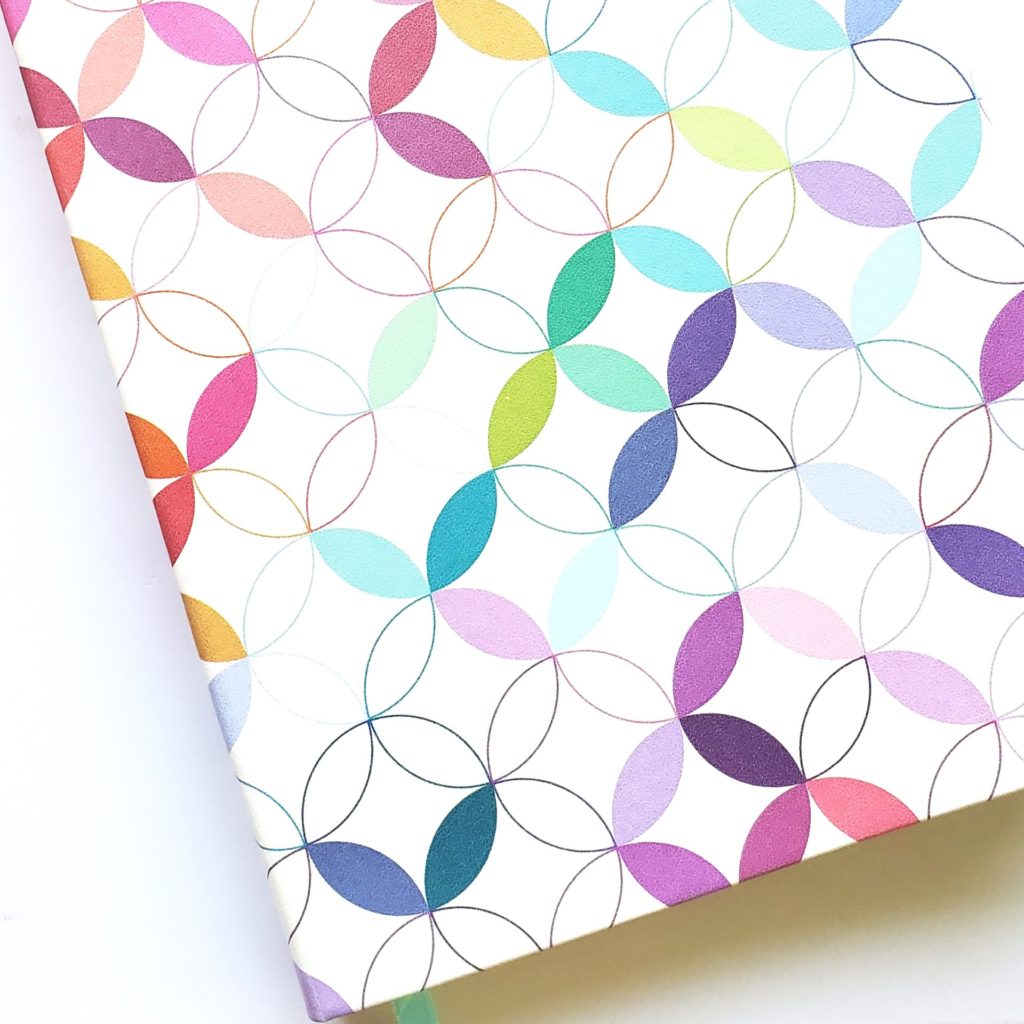
My Reading Journal:
I am currently using an Erin Condren Softbound LifePlanner, in the A5 size with a horizontal layout. (This is a link to their website but I actually ordered mine from Amazon because they were out of stock.)
I love the paper quality and the lay-flat design. This one is the mid-century circles pattern – seriously, how cute is this?
Erin Condren makes a ton of planners and notebooks in various styles. If you know this is something you’ll use frequently and want to treat yourself, I highly recommend their quality products.
As much time as I spend with my book journal, I really wanted something that was long-lasting, high-quality, and fun and inspiring to me.
In my obsession with all things planning and organization, I have used so many brands, and this is the one I am loving most.
You don’t need anything fancy to get started, you can create a reading journal out of any notebook.
Before you go and spend any money, I recommend just using what you have, especially if you don’t know that this is something you’ll like or stick to.
I have more information here if you want more help on how to get started with a reading journal.
Side Note: I’m including candid photos of my current reading journal – so don’t judge ;). Is my handwriting Instagram worthy, definitely not, it’s messy but who cares. I want to show you that you can be raw and real with your reading journal and not care about it being picture perfect.
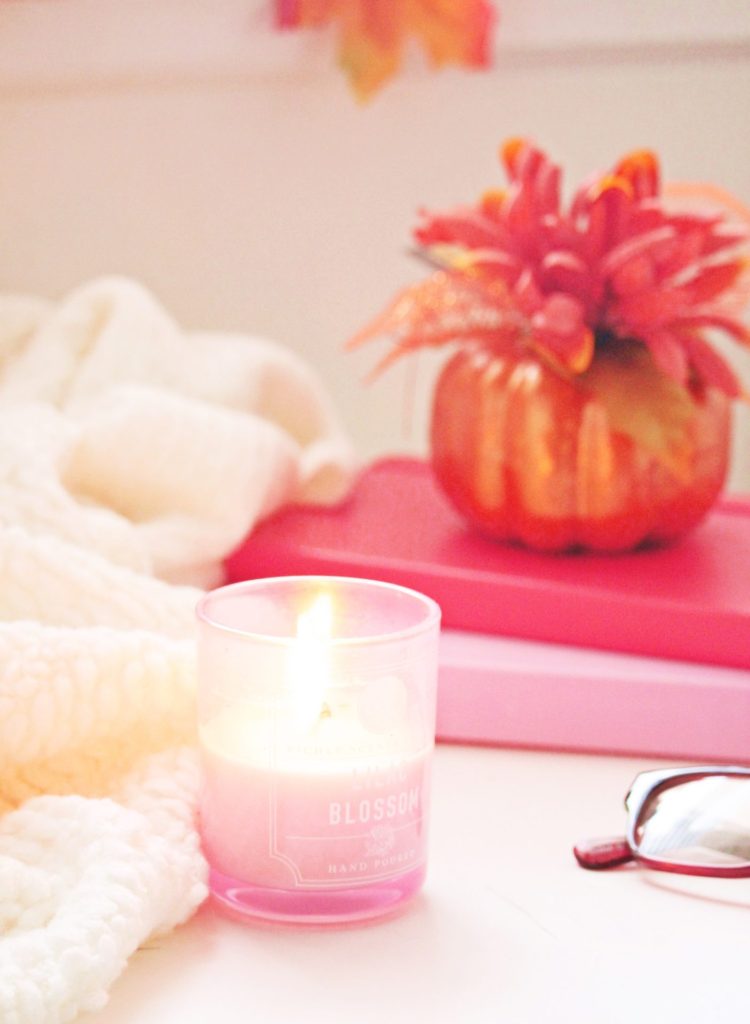
I love to create a relaxing atmosphere, lighting a candle and gathering up my favorite writing tools, to craft away and release some creative energy.
It doesn’t matter what it looks like, only that it feels right for me and I get to make it my own.
So if you are looking for a little inspiration to start your own reading journal, or maybe some ideas for things to put in the one you already have, this is the post for you!
Here is a list of ideas for spreads and trackers that you can create in your reading journal, to get you started and get the inspiration flowing:
1. Reading Goals
Do you have reading goals for this year? Maybe you want to read a certain number of books each month, join and participate in a book club at your local library, or broaden your reading horizons to new genres.
Your reading journal is a great place to write down your goals.
Get clear on how you are going to achieve them and how you will reward yourself once you’ve accomplished them. You can also keep track of milestones along the way.
The reading goal I made for myself this year is to read a total of 100 books (see my tracker below in number six).
As well as yearly goals, you can also make goals for each month.
As an example in the photo, if you have a monthly calendar in your journal or planner, you can use the lined section that’s typically on the side.
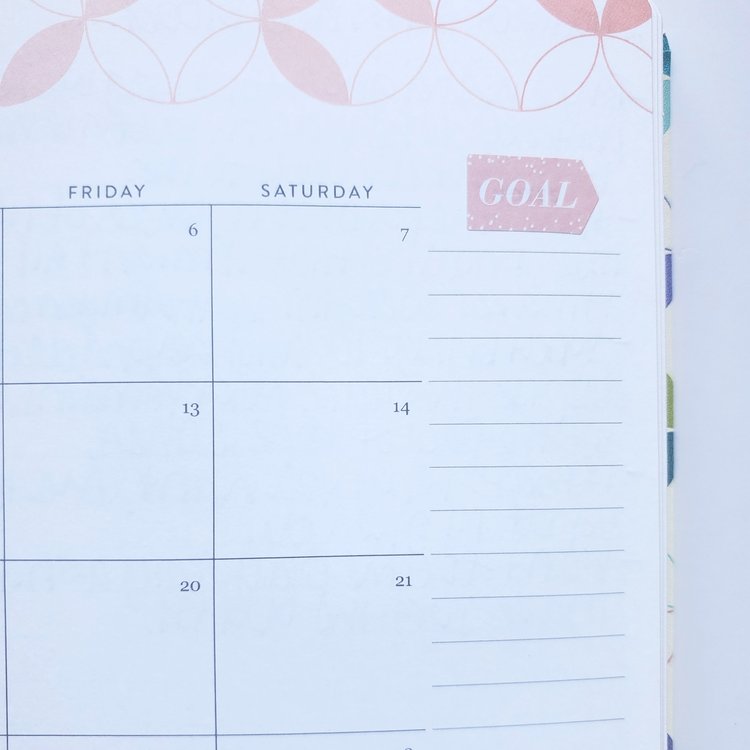
2. Habit Tracker
Create a habit tracker in your reading journal to record when and how much you read on a daily or weekly basis.
This is super helpful in keeping you accountable if one of your goals is to create better reading habits, or if you need to track your reading to reach another goal.
You can use planner stickers or simply draw checklists and boxes to mark your reading time. (I think we are all quite familiar with habit trackers in some capacity so I don’t think it needs too much explanation.)
If habit tracking is something you currently do in your planner or journal, or want to get in the routine of doing, add one for your reading progress.
3. Anticipated Releases
There are so many new books being released each year, and nothing is more exciting than the hype surrounding new books.
I use a yearly overview page in the front of my reading planner to keep track of when new books are being published.
I reference this spread each month so I know what books I want to get and what I have to look forward to.
You can keep this list on a simple lined page or create a two-page spread like this one, with a box for each month of the year and enough room to write all the new books you want to remember.
Side note: If you’re wondering what pen I’m using, it is the Micron PN in black. I love these because they are smooth and bold but they don’t smear or bleed.
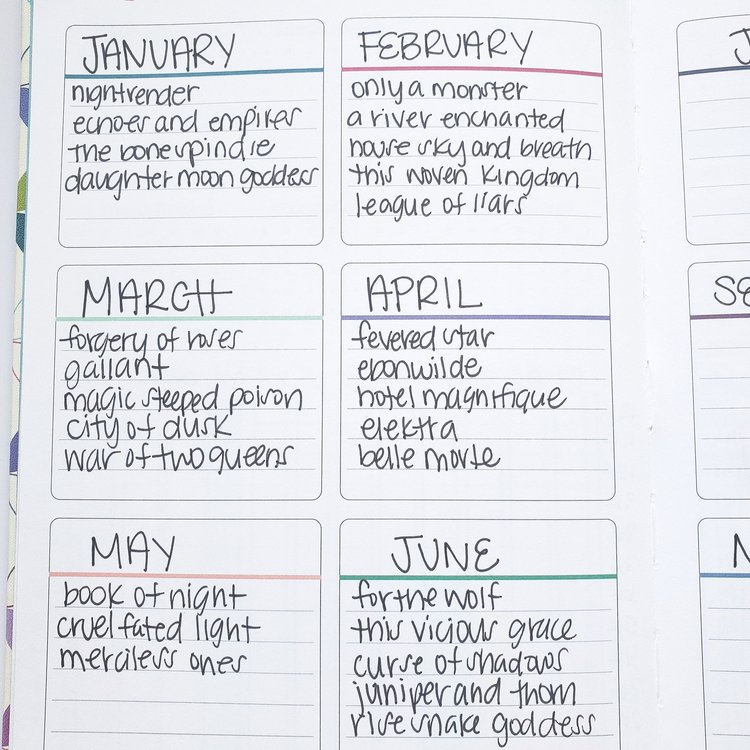
4. TBR List (to be read)
If you are anything like me, you have a ‘to be read’ list a mile long and it’s forever growing.
Keep a running list of all the books you’re interested in reading, so you can scan through it any time you’re trying to decide which book to pick up next.
My tbr list is constantly changing and updating so I like keeping a simple list on a lined sheet that I can adjust and adapt frequently.
Plus, I love being able to cross books off once I’ve completed them – nothing beats the high of checking things off a list.
5. Book Series
Just like a ‘to be read’ list, you can also keep track of different book series that you are reading.
You may not want to read through an entire series at once, or you may be waiting for the next one to come out.
I like to take breaks in between books of a series, which means at any given time I’m usually in the middle of many different ones. I know some readers might find that an appalling habit but for me, it works.
I tend to get a little burned out if I’m stuck in a specific story world or with certain characters for an extended period of time. I find that if I read other books in between and come back to the series later, I’m refreshed and ready to continue.
You can use your journal to list out the reading order of the books in a series and check them off as you complete each one.
6. Reading Challenges
Lots of readers enjoy participating in challenges, like the alphabet challenge (reading books whose titles start with each letter of the alphabet), book bingo (like regular bingo but with a different book criteria in each square), or other challenges with book clubs and groups.
Find a reading challenge that excites you and make a tracker for your progress.
I participate in the challenge hosted by Goodreads, an amazing platform for book lovers. My goal this year is to read 100 books (I made it to 98 last year).
If you have a challenge to read a certain number of books this year, you can create a simple grid like the one in the photo. This is lined paper with vertical lines drawn to make a grid, and then numbered in each square.
I color in a square for every book I read using my favorite pastel highlighters by BIC. I decided to make this spread for the entire page, and put a star next to my goal that I want to reach.
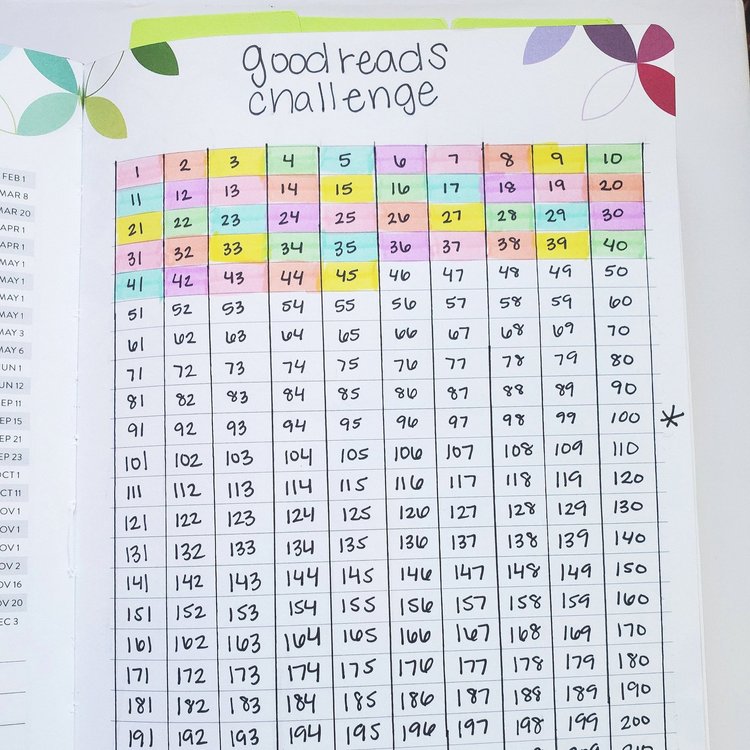
7. Book Club
Are you part of a book club? Or maybe even multiple book clubs?
Your reading journal is the perfect place to keep track of all the necessary information.
Create a page that lists things like their website, when you meet, where you meet, when to vote for the monthly book pick, or contact information for friends you meet in the club and want to collaborate with.
Anything you feel is important and want to remember in the future, you can have all that information saved in one location.
8. Discussion Questions & Answers
If you are in a book club, you can create a spread for each month’s book pick.
Write down the discussion questions, take notes while you read, and record your answers.
You will have all your thoughts, feelings, opinions, and comments to reference during your next meeting. This will help you recall what you read and give you a jumping off point for sharing with everyone.
If you aren’t in a book club, you can create a list of questions and prompts to use when you write book reviews, or as a reference to enhance your critical thinking skills while you read.
If you’re a writer, keep a list of prompts and questions that will help you learn new narrative techniques as you read so you can apply them later when you are writing your own book.
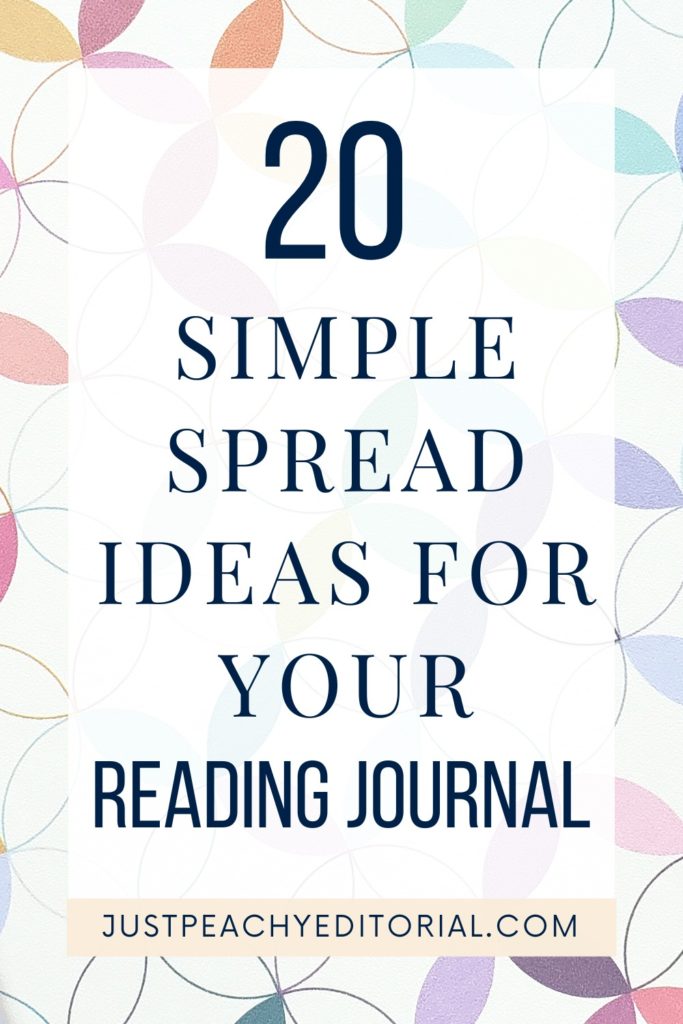
9. Library Books
I’m a huge advocate for getting books at your local library, especially for anyone who reads as much as I do.
Although I do love buying books to fill my beautiful shelves and support the authors that I love, borrowing books from the library is a great choice for saving money or for trying out books by new authors or different genres than you’re used to.
If you do frequent the library, you need to keep up with the books you borrow and when you need to return them – so you never have to pay late fees.
Create a simple spread to keep track of all the library books you have checked out and when they are due. I like to use these fun stickers to mark in my reading journal when library books are due.
These are from Planner Kate on Etsy but unfortunately she no longer sells them, if you do a quick search on Etsy you can find other shops that have something similar.
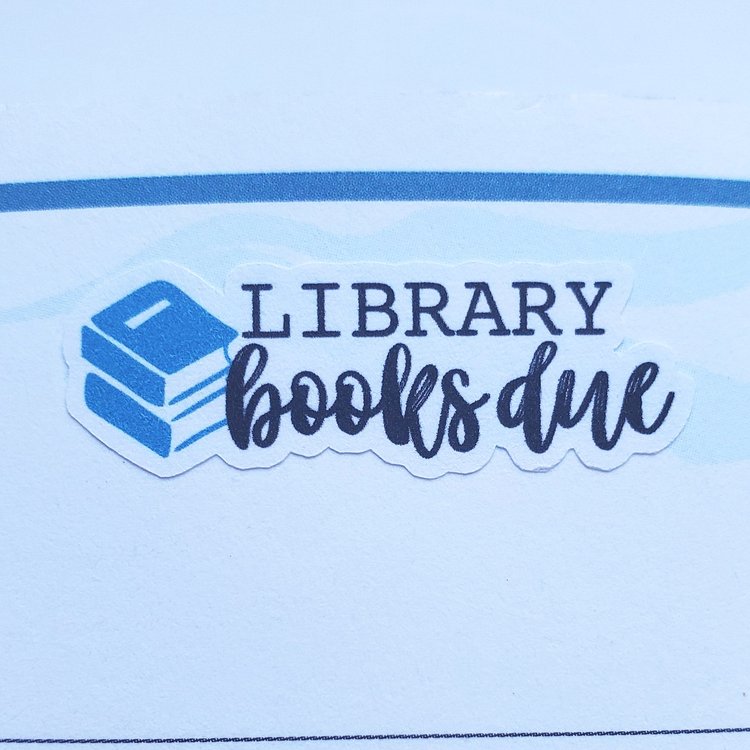
10. Monthly Calendar
One reason I like to use a planner as my reading journal is because it has pre-made monthly calendars.
But even if you are using a notebook or bullet journal, you can make your own monthly spread.
Write the titles of the books you read and use highlighters to mark how much time you spent reading each book.
I like this method because I can look back and see which books I sailed through, which books were more of a slog, when I was busy with life, or if I was in a reading slump.
You can track all this information about your reading habits from a monthly perspective and reflect on it.
Tip: I’m not the most artistic, and I use simple materials that are inexpensive and easily available. Just a pen and my pastel highlighters from BIC that I absolutely love – the colors are so pretty and they aren’t neon bright. Sometimes, when I’m feeling a little more fancy or I’m in the mood to be more creative, I also use other things like planner stickers and washi tape. Use whatever you already have or go and find more supplies that bring you joy.
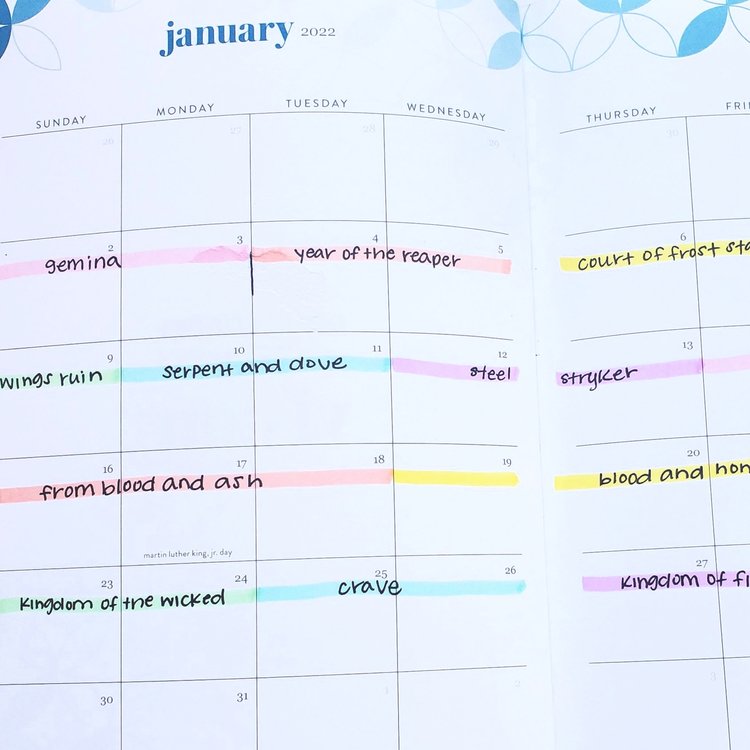
11. Monthly Overview
If you’re using a planner, you may have what is sometimes called monthly overview or currently page.
A lot of planners on the market have this space for you to write extra goals, plans, or details for the month.
If you are using a bullet journal or notebook, you can create a similar concept as this.
This one is a combination of boxes that are blank, lined, dot grid, and bullet points. I’ve been playing around with this spread each month to decide how exactly I like to use it.
In general, I include the total books I read that month, the total number of pages, the years the books were published, my top five favorite reads from the month (or just number one favorite read), book stats (explained in number fourteen below), how many reviews I wrote, and a break down of my ratings.
The monthly overview spread can be tailored to whatever information you find relevant in your reading life.
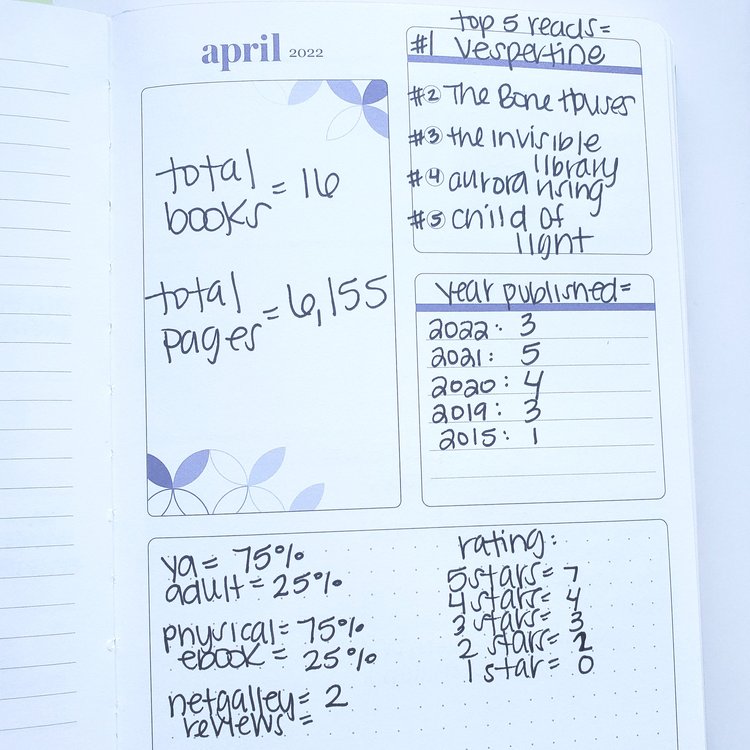
12. Favorite Quotes
You run across a line of prose that just steals your heart and makes you swoon and now you want to remember it forever.
Your reading journal is the perfect place to write down your favorite lines from books as you’re reading.
Whether you have borrowed books from the library, you don’t want to fold pages, or you don’t want to write in your books, a reading journal gives you a place you can keep your favorite quotes forever.
Write whatever you love and makes you happy. I love keeping my favorites quotes like memories to relive.
Also, this can be a great way to practice calligraphy, brush pen lettering, or any other creative journaling writing techniques that you want to improve.
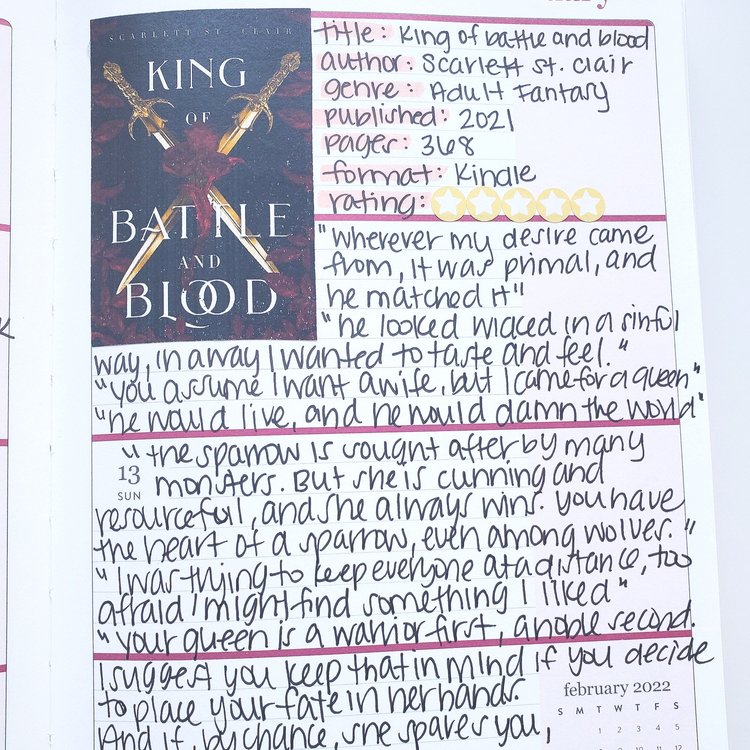
13. Favorite Books
Keep a list of your favorite reads, especially if they are ones that you would love to re-read again in the future.
I like to write down my top five favorite books each month and then at the end of the year, I create a “battle of the books” spread to determine my all-time favorite read of the year.
I use a monthly overview spread to write these top five books down for each month.
You could also use a lined sheet and make a simple list for your favorite reads throughout the year as a whole.
If you really want to spotlight your favorite books, you can make an entire page dedicated to a single favorite book and write down all the things you loved about it – characters, tropes, plot points, etc.
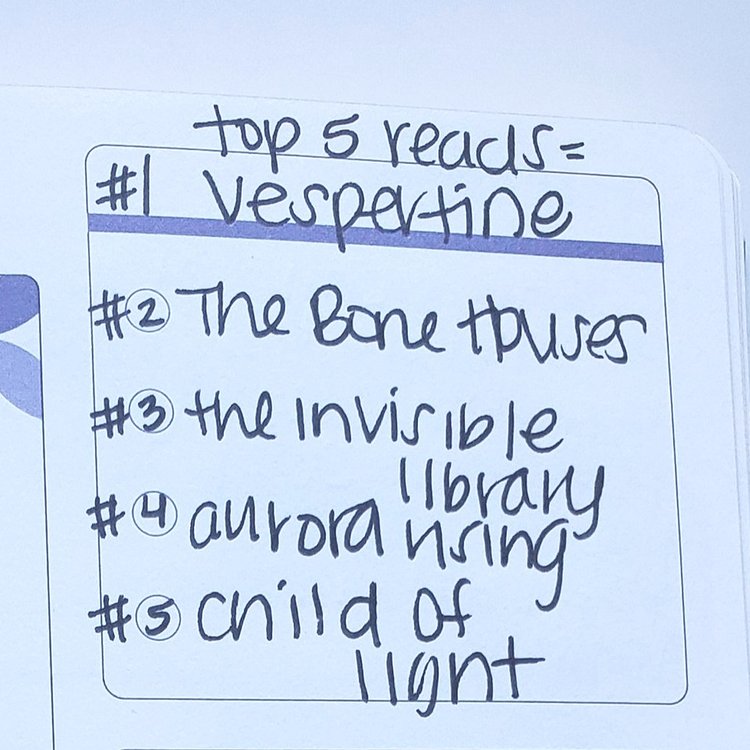
14. Book Stats
Keeping a tracker of book statistics, or criteria and categories that the book fits into, is a great way to discover your reading preferences.
Keep a record of the number of books you read in each genre. This is especially useful if one of your goals is to branch out of your comfort zone and read in different genres.
Record what format you read the book in: audio, physical, or e-book.
There are many categories of book statistics, decide on a few that you feel are relevant to your reading life and a tracker in your journal.
I like to calculate the percentage of my reads for each month in two categories: adult versus young adult and physical versus e-book. I keep these stats on my monthly overview page.
At the end of the year, I total them together to get my overall yearly books stats.
I also like to record the year they were published to get an idea of how many new releases I read versus titles from my backlist tbr.
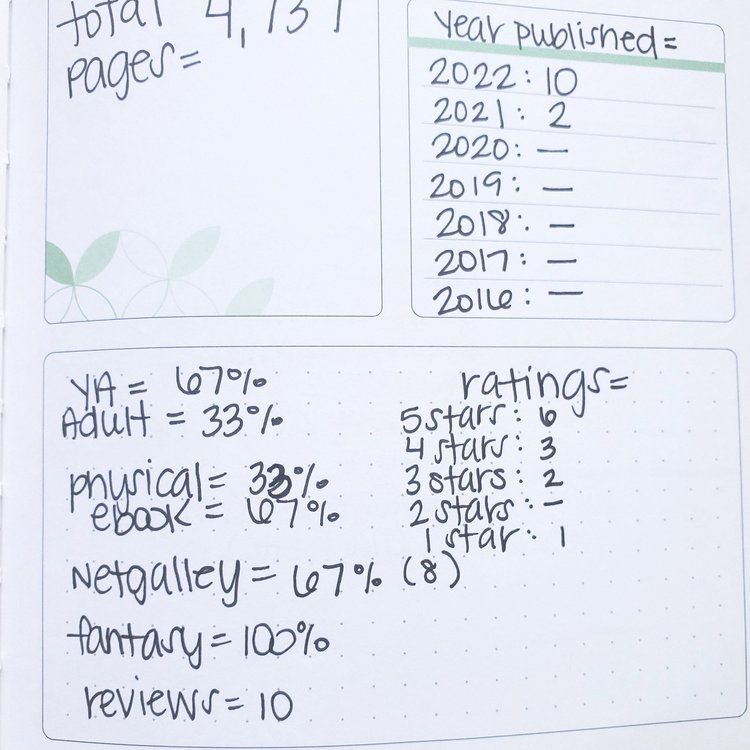
15. Author Stats
Similarly to book stats, you can also make a spread to track author statistics. This is especially useful if you are wanting to broaden your reading horizons.
Record the authors’ nationality, gender, or any other criteria that you feel is relevant to your reading life or is something you want to discover about your reading habits.
16. Number of Books
Keep track of the number of books you read each month.
I like to keep a yearly overview of the number of books I read each month.
This is a space at the front of my planner that has a yearly calendar overview and some lined space at the bottom. As you can see from me having to write in the number sixteen, it wasn’t nearly enough room for me because it only goes up to twelve books per month.
Next year, I’ll make this a full page instead. You may not get it right the first time, but don’t worry about it being perfect. Twelve books may be plenty for you or it may be way too many for you.
Create a simple graph or chart like this one and see how your reading habits unfold throughout the year.
Tip: When I first got my journal I was so scared to write in it because I didn’t want to “mess it up,” but the truth is there’s no such thing. Just go for it, make it messy, and have fun with it. You can always change your style or recreate spreads later if you want to. The journaling process is an experimental journey, and you’ll learn things along the way about what you like or don’t like. So don’t be afraid to just jump in and get started.
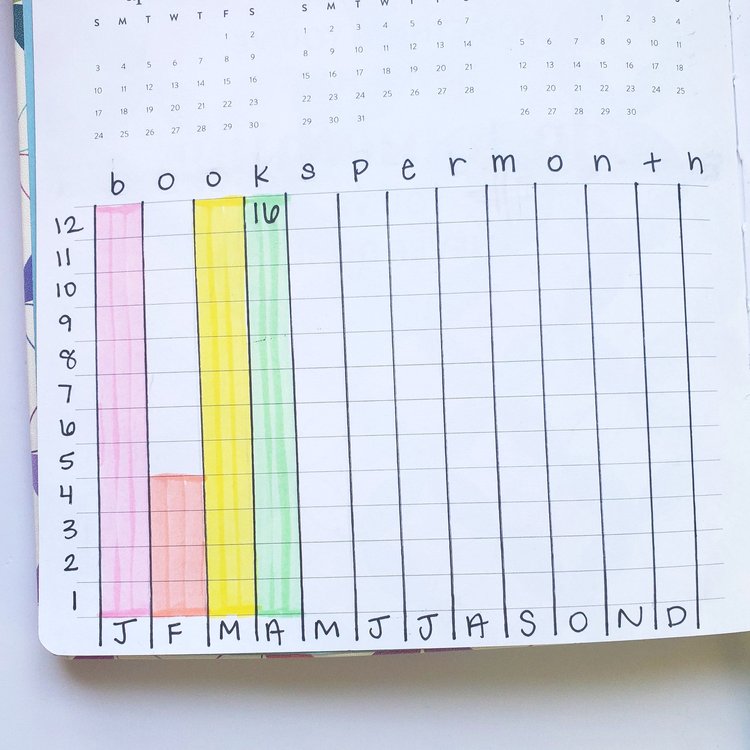
17. Number of Pages
Similarly to the number of books, you can also keep track of the number of pages you read each month.
I keep a yearly overview tracker for each month on the opposite side of the page from the books per month chart. I also keep track of both the number of books and number of pages on each monthly overview spread as well.
When I made this at the beginning of the year, I didn’t know how many pages I was averaging, so I decided to make each line worth 1,000 words.
But a few months in, and I’m realizing that even in months where I read a ton (like sixteen books in April) the amount of words doesn’t come close to the twelve thousand at the top of the chart.
Next year, I will probably use a full page for this spread and make a line for every 500 words so this stat represents a little more accurately. For now, I just round up or down to the nearest thousand.
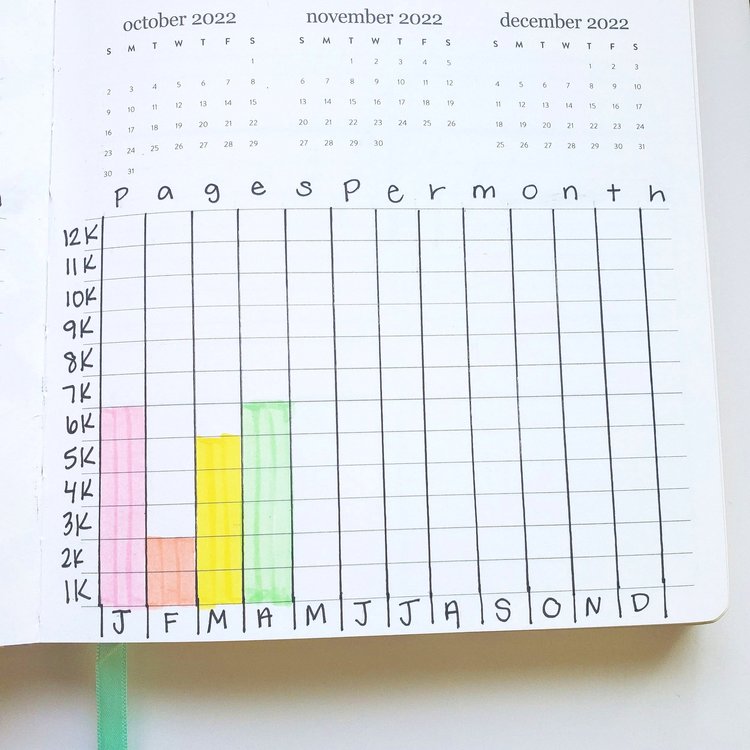
18. Book Reviews
Whether you are a book blogger or just a casual reader, you can use your journal to record all your thoughts, feelings, opinions and reactions while reading.
Get creative with your book reviews. They can be lengthy essays or just short snippets; it’s totally up to you.
Create a page with questions to reference or even create an outline template for your book reviews.
Book reviews are so crucial in this industry. They can positively or negatively affect the success of a book. Publishers, authors, and other readers alike rely on them.
So use your reading journal to sketch out that review draft so you can post it to relevant sites and share it with others.
19. Weekly Spread
If you are using a planner like I am, then you will have weekly pages. If you are using a notebook or bullet journal, you may want to create weekly pages in between your months or just use the blank ones to create spreads for each of the books you read.
I don’t pay much attention to the dates themselves, for me it doesn’t matter, but I use these pages to detail and journal about each of the books. I use the coordinating highlighter color from my monthly calendar to add a little pop of color.
You can even include a picture of the cover (learn more about that in number twenty below).
I write the title, author, genre, when it was published, how many pages in the book, the format that I read it in (e-book, physical copy, or audio) and my rating of the book.
For books that are early release copies given to me by the publisher, I also include who the publisher is so I know when I’m looking back who I worked with, as well as the cute pencils stickers to note that I wrote a full-length blog post review and posted it to retailers.
For my ratings, I use star stickers from Planner Kate on Etsy because it is fun and another way to add a pop of color. You can also just draw stars instead.
The possibilities for your book review pages, or weekly pages if you are using a planner, are endless, you can make them work however you’d like and include whatever you want.
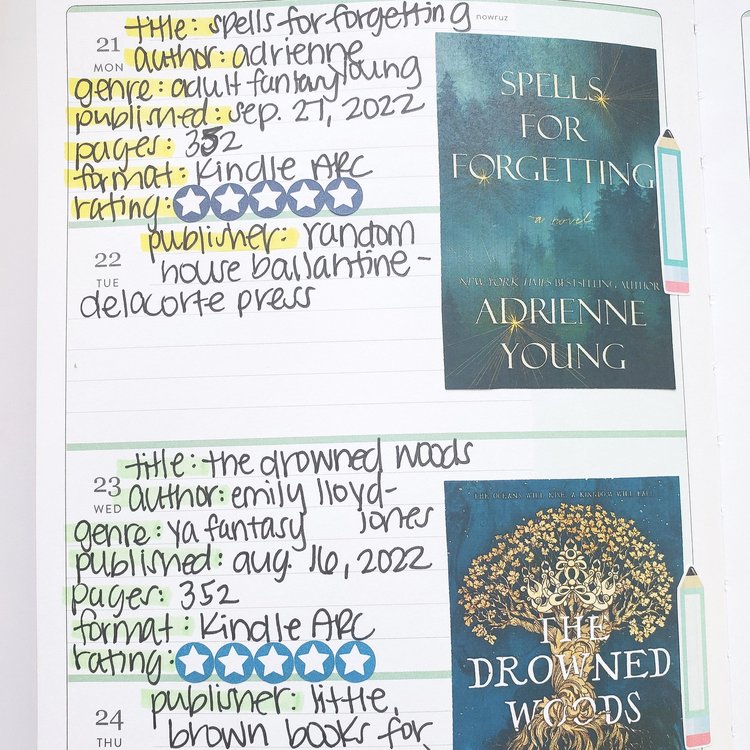
20. Book Covers
I love printing out pictures of the book covers to keep in my journal, since I don’t draw or illustrate. I love looking at the beautiful covers and it adds some pop of color to my spreads.
Here is how I format and print these: First, I go to Goodreads and save the cover images. Then I insert them into a Google Doc. Click on the image, then on the three dots below it, then click on size & rotation. Adjust the width to two inches and the height will automatically resize to around three inches.
And that’s it! I fit up to six book covers per page before printing. Since I don’t have a color printer at home, I save the file as a PDF and then go to my local library to use theirs. I cut them out and use a tape runner to put them in my journal.
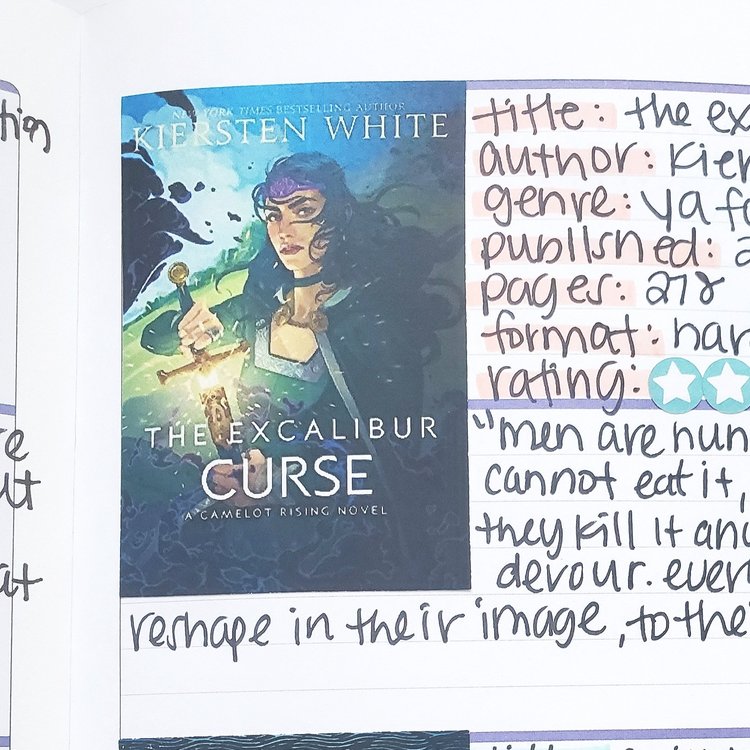
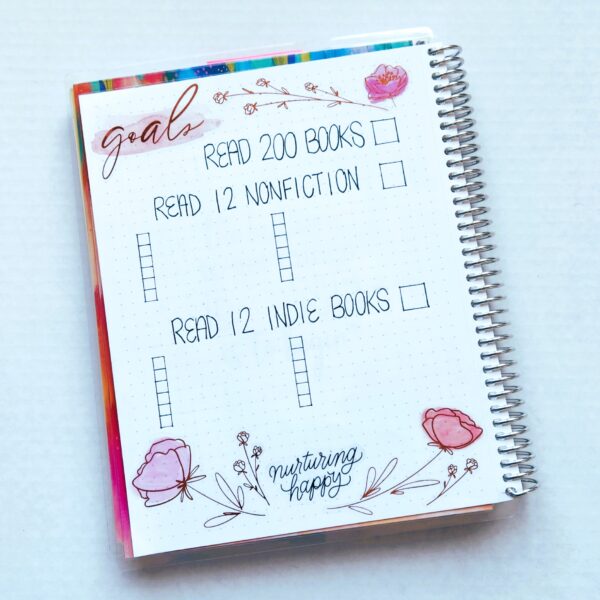


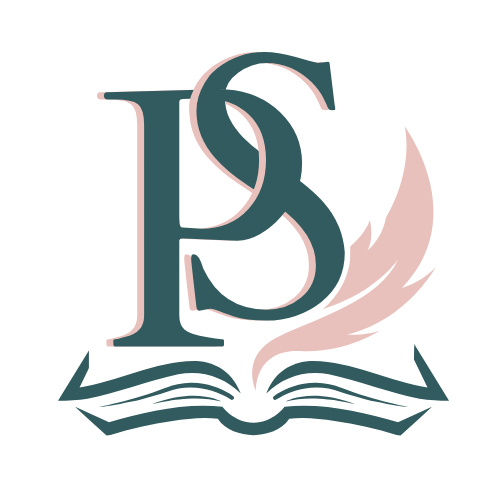

Thank you so much!! I’m just starting a reading journal and it has been so discouraging looking for ideas as I’m not good at drawing and not very creative. I found your post so inspiring and your journal so pretty! Thank you for being real and honest about how not only simple it can be but also about how it doesn’t have to be perfect. I will definitely be using some of your suggestions!
Thank you! As much as I love looking at all the gorgeous spreads others make, I think it’s super important to also share the imperfections of reality. I’m so glad you found this helpful! Feel free to message me if you want someone to share your progress with and bounce ideas off of. I’m always happy to chat about books and journals. Have fun with it 🙂
I just a beginner book journal.Your noted is reallyinspired me how to start my new journalling 2024.Thanksnin advanced.⚘️